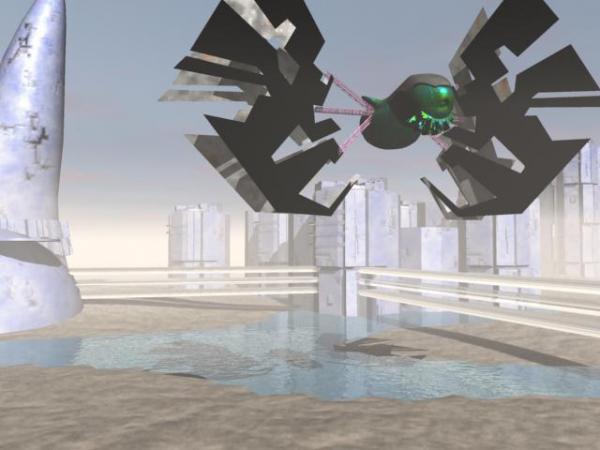BY LETTER
Aircar
Technology > Application > Transportation > Atmospheric Transport
Technology > Technology Type or Material > Drytech/Hylotech
Technology > Application > Everydaytech
Technology > Technology Levels > High Tech / Hitech
Technology > Technology Type or Material > Drytech/Hylotech
Technology > Application > Everydaytech
Technology > Technology Levels > High Tech / Hitech
 Image from Steve Bowers | |
| An aircar configured for rapid flight, using jet propulsion and aerofoil wings | |
Small personal aircraft often used for short to medium range transportation on planetary surfaces or within habitats and megastructures.
Aircars as a concept date back to the Information Age, but can only be said to have become practical as a transportation system during the Interplanetary Age when advances in nanotechnology made such vehicles practical as anything other than a wealthy sophont's toy.
In actuality, the basic concepts of the modern aircar can be traced back to the Information Age scientist and thinker J. Storrs Hall, who first applied the then theoretical capacities of nanotechnology to the problems of personalized air travel. Hall's work on the concepts of fancloth, ultralight, high-strength materials, and reconfigurable flight surfaces formed the initial foundation and inspiration for later researchers who worked to make his concepts a reality.
A modern aircar uses a system of extensible landing legs to first raise itself off the ground and then literally leap into the air. A network of fancloth 'sails' deploys from the main fuselage on extensible smart matter spars and provides propulsion for vertical and short range flight; for more thrust many designs use a robust fan matrix array instead. For longer journeys, the craft reshapes itself using a smart matter hull into a streamlined, actively configurable shape optimized for high speed flight at up to 1000kph. Small jet thrusters provide forward thrust, while the hull surface first microforms itself to provide negative drag and then continuously adapts its surface shape to create the optimum flight configuration for the volume of atmosphere the craft is traveling through.
Energy for the craft can be provided from a number of sources including hydrogen fuel cells (the oldest fueling system for such craft), nanoflywheels, and beamed power using tightly focused microwave or laser based systems.
Most aircars are designed to carry four to six sophonts of roughly near-baseline size although if necessary vehicles configured for larger or smaller numbers of passengers (depending on the size of the beings in question) can be readily produced.
 Image from Juan Ochoa | |
| An aircar configured for slow, hovering flight, using fancloth sails | |
Related Articles
Appears in Topics
Development Notes
Text by Todd Drashner
Initially published on 25 January 2007.
Initially published on 25 January 2007.






